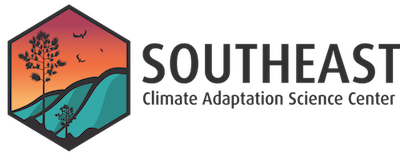
- This event has passed.
Linked by the sand: Leveraging natural synergies between saltmarshes and barrier islands to improve coastal resiliency
Title: Linked by the sand: Leveraging natural synergies between saltmarshes and
barrier islands to improve coastal resiliency
Presenter: Dr. Christopher Hein, Associate Professor, Virginia Institute of Marine Science
Co-authors/Collaborators on the Talk:
- Dr. Michael Fenster, Professor, Randolph-Macon College
- Dr. Keryn Gedan, Associate Professor, George Washington University
- Jeff Tabar, Senior Principal/National Coastal Engineering Practice Lead, Stantec
- Emily Hein, Assistant Director for Advisory Services, Virginia Institute of Marine Science
- Todd DeMunda, Associate, Senior Coastal Engineer, Stantec
Sponsors: NOAA/NOS Science Seminar Series and NOAA/NOS National Centers doe Coastal Ocean Science (NCCOS).
Seminar Contacts: Dave Kidwell and Tracy Gill.
Remote Access: Browser entry is now working, but the IE browser in not recommended; users should use either Google (Chrome), Windows (Edge or Chrome) or Safari (Chrome) if using a Mac. You can login thru the browser here: https://noaabroadcast.adobeconnect.com/chrisheins/event/registration.html
If you want to enter via the Adobe Connect app you must download it ahead of time.
1. If you have downloaded and used Adobe Connect recently, you do not need to download but you can test it here.
2. If you have NOT used Adobe Connect, you MUST DOWNLOAD Adobe connect ahead of time to use it, and your IT staff may need to do it. The download is here:
3. After downloading Adobe Connect, it is important to TEST your ability to use Adobe Connect, well before the webinar, here.
4. After downloading and testing Adobe Connect, register here:
https://noaabroadcast.adobeconnect.com/chrisheins/event/registration.html
5. After registering, you will get a confirmation email with a link to the webinar; this link works only if you have downloaded the adobe connect software.
Attendees are muted during the webinar and audio is over the computer, so adjust the volume on your computer speakers or headset.
Accessibility: Closed Captioning will be provided.
Abstract: Barrier islands and their adjacent saltmarshes have a synergistic relationship: wind and storm processes transport sediment from the beaches and dunes to create and build marshes along the landward fringe of the island. In turn, these marshes exert a stabilizing influence on the island by forming a platform onto which the island migrates, consequently slowing landward barrier migration and inhibiting storm breaching. This presentation will introduce these barrier-marsh couplings and highlight a novel framework for applying them to coastal management. Further, it will detail a case study of the design of a marsh creation project that showcases the engagement of scientists, engineers, stakeholders, and policymakers. Specifically, it will describe (1) the geologic and ecologic data obtained from the southern 4 km of Cedar Island (Virginia, USA) and nearby back barrier tidal channels, tidal flats, and flood-tidal deltas and (2) the use of those data to develop an engineering and design plan for the construction of a high (46 ha) and low (42 ha) fringing marsh platform located behind the island, proximal to a former ephemeral inlet. Construction of this marsh would(1) provide additional habitat and ecosystem benefits, (2) slow the rapid migration of Cedar Island, and (3) hinder island breaching. The presentation will also chronicle project design selection, which involved balancing best-available existing science and models, considering design and financial constraints, identifying stakeholder preferences, and maximizing restoration benefits of habitat provision and shoreline protection. Ultimately, the project to be presented—presently at the final design and permitting stage—may enhance the storm and sea-level rise resilience of the island, backbarrier marshes and lagoons, and the mainland town community; and provide an example of a novel science-based approach to coastal resilience that could be applied to managing other coupled marsh-barrier settings.
Bio: Christopher Hein is a coastal marine geologist at the Virginia Institute of Marine Science (VIMS), William &Mary (W&M). He received a bachelor’s degree in Earth Science from Cornell University in 2003 and a doctoral degree in coastal geology from Boston University in 2012. Prior to starting at VIMS in 2013, Hein completed a two-year postdoctoral fellowship at the Woods Hole Oceanographic Institution. Hein’s research is primarily focused on coastal change, and forecasting the impacts of sea-level rise, changing coastal sediment supplies, and increased frequency/intensity of storms on barrier islands, dunes, marshes, tidal inlets, and the communities that live, work, and recreate on them. He does this primarily through looking at the past record of coastal change over the last several thousand years, preserved in the sediment and the historic records. Hein is also an active educator: he currently advises four graduate students and six undergraduates, and co-directs the VIMS/W&M Undergraduate Program in Marine Science.
Slides / Recordings / Other Materials: Slides and recording may be shared after the webinar with all who register.
Subscribe to the NOAA Science Seminar Series weekly email: Send an email to OneNOAAscienceseminars-request@list.woc.noaa.gov with the word 'subscribe' in the subject. Send an email to OneNOAAscienceseminars-request@list.woc.noaa.gov with the word 'subscribe' in the subject. Visit the NOAA Science Seminar Series website for more information. We welcome your comments and ideas!
{Dr. Christopher Hein, Associate Professor, Virginia Institute of Marine Science}
This event has a video call.
Join: https://meet.google.com/wmo-eaqu-ahg
(US) +1 401-903-3746 PIN: 363847819#
View more phone numbers: https://tel.meet/wmo-eaqu-ahg?pin=1100676787740&hs=7
